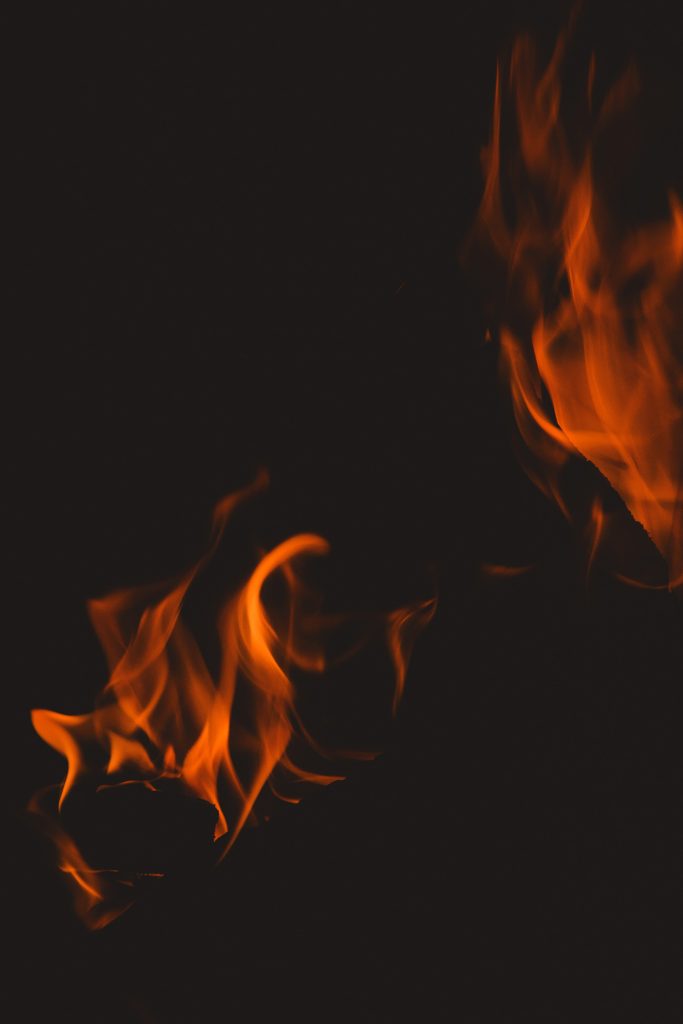Choosing a good tinder is an important component of fire making. I do most my camping in national and provincial parks where Leave No Trace is essential. I like to carry cotton in my fire kit. Cotton ignites well, packs small, and weighs nothing. But, once in a while, I get the opportunity to practice my skills using natural tinders. Here’s what I’ve learned.
Natural Tinders Best Practices
In ideal conditions, you’d be gathering dry tinder. But, since ideal conditions are rare and wet conditions are common, it’s good to be thinking about tinder long before you start a fire. What is available? Is it dry? Can you dry it? How long will it burn? Will you need to combine it with another material?
When you find something that will work, tuck it into your clothing to keep it away from the elements. The warmth of your body can help remove any remaining moisture. Last time I was out, I found usnea (old man’s beard) on my hike and tucked some into my jacket. It worked perfectly.
What tinder is available to you will vary by location. All tinders need some sort of preparation to be effective. For that reason, it’s good to practice with different types of tinder before relying on them. Should an emergency happen, it’s best to have something with you that you know will ignite easily.

The “Bird’s Nest”
You may have heard a tinder bundle called a “bird’s nest.” That’s because a bird’s nest is an ideal example of a tinder bundle. Birds construct their nests from dry twigs or grasses. They make a small depression in the centre and pack it with softer plant down or leaves. When you build a tinder bundle, try to recreate this concept.
A combination of natural tinders works best, but isn’t always necessary. Think about using twigs, grasses, and conifer needles for the outside of the “nest” and soft plant downs, usnea, and dried leaves for the depression.
Remember, fire needs oxygen to survive. Be sure your tinder bundle is not too compact. If it is, there won’t be enough air circulation.
1. Dried Grass
Dried grass is small and fibrous and can be easily shaped into a bird’s nest. In dry conditions, it can be easy to find and everyone knows how to identify it. But, grass is susceptible to dampness, so find it dry and keep it dry. If the grass is still green, it will contain too much moisture to burn.
2. Usnea
also called “old man’s beard” or “beard lichen,” grows abundantly in North America. Fresh off the tree, usnea can contain too much moisture to be an effective . That said, it dries fast when kept inside your clothing.
Usnea needs to be fluffed up before using it. If it is too compact, it won’t catch a spark. It works best in combination with another tinder source.
3. Tinder Fungus
There are a few different types of fungi that act as good tinders. I’m most familiar with . Chaga can be found growing on birch trees. It’s easy to spot because it looks like a black growth on an otherwise light tree. The inside of is an orange-copper . This is the part of the mushroom that you want to use. Depending on the weather conditions, could be damp after harvesting.
You can process for tinder by grinding it into a powder or by creating shavings. Either are great to put into the centre of your bird’s nest.
4. Fatwood
Fatwood is resin-soaked heartwood from a pine tree. You can find it by identifying a fallen or felled pine. In damaged trees, resin rises from the roots into the stump. Even a rotted tree can contain a solid mass of fatwood in the stump. Fatwood is super flammable and isn’t vulnerable to dampness and wind like other natural tinders.
Shave fatwood into smaller curls. You can also use fatwood as a kindling.
5. Cattail Flowers
Cattail flowers (and other plant downs) are excellent tinders in combination with slower burning materials. Plant down will easily catch a spark, but will burn too fast to ignite your kindling.
You don’t have to wait until cattails heads open up in the fall to use them. It’s easier to gather the brown flower heads and release the down yourself. Check out this video of somebody releasing the fluffy seed heads.
6. Pine Needles
Pine needles take more heat to ignite than other tinders, but will burn longer than grass. Pair them with something that ignites at a lower temperature and you’ll have no problems. They are easy to find, but make sure they are dry / brown in colour.
7. Birch Bark
Birch is easily identifiable. It has light and peeling bark. It’s also highly flammable. Harvest birch bark from fallen trees or standing deadwood. Removing bark from living trees makes them more susceptible to pests, disease, and weather.
To prepare birch bark, lay it flat and scrap the outside with your knife. This should cause the bark to flake and produce small shavings. Igniting these shavings should lead to the bark igniting as well.
Campfire 101
Check out other posts from Campfire 101 series: Fire Safety, Types of Firewood and How They Burn, and Measuring Cooking Temperature. I’m wishing you all happy campfire memories! Stay safe and always respect local fire regulations.
